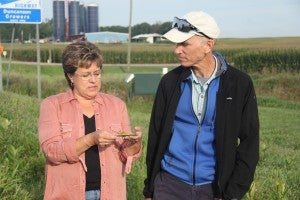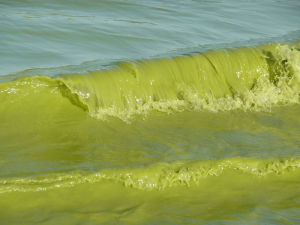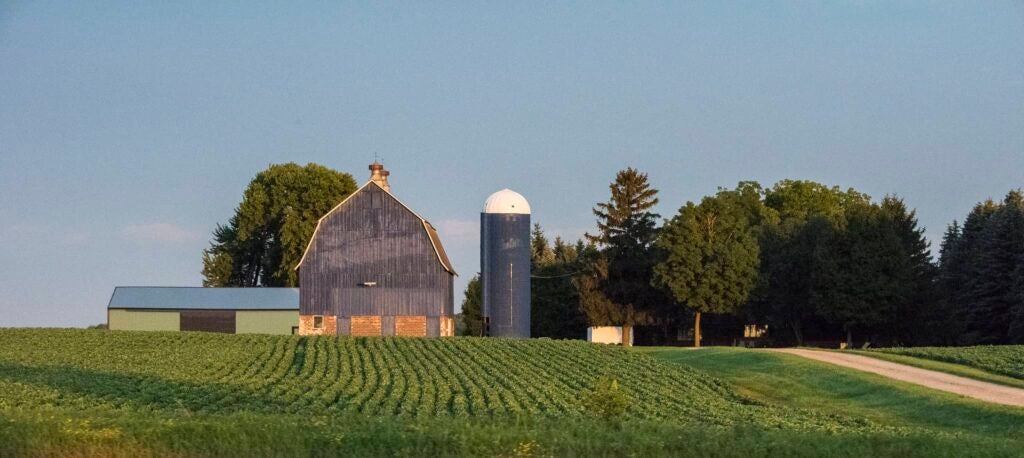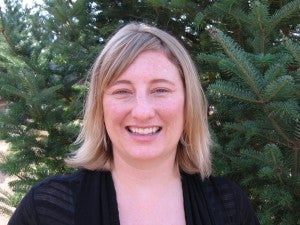Data on the financial impacts of climate-smart practices, like cover crops, can help inform farmers’ financial decisions when considering these practices. While cover crops can help improve soil health and make farms more resilient to extreme weather, farmers continue to have questions about the types of financial impacts cover crops will have on their operations. A multi-year collaborative project is collecting and analyzing data to help farmers and their advisers answer these questions.
Growing Returns
Selected tag(s): Minnesota
Cover crop costs vary significantly: new data from 83 Minnesota farms shows
How will climate change affect U.S. crop yields?
As the UN climate conference kicks off in Egypt, food and agriculture are central to negotiations for the first time. More severe droughts, warmer temperatures and heavier rainfall fueled by climate change are making it harder than ever for the world’s one billion farmers to grow food and fiber. While some farms and regions are more vulnerable than others, climate change will affect farmers everywhere.
Here in the U.S., where farmers have a long history of steadily increasing yields, climate change will likely cause crop productivity gains to stall — or even reverse — as soon as 2030.
To help the environment, we must first help people

Now living in Austin, Texas where diverse wildlands are numerous and easily accessible, Audrey takes any opportunity she can get to put on her hiking boots and explore her natural surroundings. She also volunteers with the City of Austin to give guided hikes on preserves. Credit: Rob Binder
I grew up in the high and dry panhandle plains of Texas, where trees are scarce, wind is always blowing, and the smell of feedlots lingers in the air. Needless to say, I was not overly inspired by my surroundings – at least not at the time I lived there.
Had I not traveled with my family growing up, I wouldn’t have known what I was missing. Throughout these travels, I became enraptured by the biodiversity and lushness of other ecosystems and felt compelled to learn as much as I could about them.
But the stark contrast between some of the natural ecosystems and working landscapes I was exposed to led me to develop a pretty pessimistic view of humans’ impact on the environment. Surely, there had to be a better way of balancing human needs for things like food, water and shelter with nature’s needs.
Determined to tackle this problem, I got my Master’s in Environmental Management from Duke University’s Nicholas School of the Environment and took a job at Environmental Defense Fund (EDF), where I had heard that scientists and economists were developing incentive programs for landowners to improve water quality, reduce greenhouse gas emissions and restore habitat for at-risk wildlife.
Little did I know my worldview was about to be turned upside down.
Putting people first Read More
As winter approaches, monarch caterpillars fuel up on a Minnesota farm

Kristin Duncanson holds a monarch caterpillar we found on her farm. “Everyone has a monarch story,” she said.
Duncanson Growers is a family farm located in the heart of southern Minnesota. Owners Kristin and Pat Duncanson produce pork and grow corn, soybeans and vegetable peas on the farm, with a commitment to sustainable practices that improve the quality of their land. But it’s not just about environmental sustainability.
“We also need to maintain and increase our productivity to be economically sustainable,” Kristin said.
The Duncanson family has been committed to sustainability not only through their own farming operations, but also through outreach and education efforts. I recently paid a visit to the family’s farm, where just the night before they had hosted 30 college students for dinner, recognizing the importance of communicating their sustainability practices to others.
In addition to their current practices, which include improving data collection to increase fertilizer efficiency, reducing tillage where possible and rotating crops, the Duncansons have also maintained some very high quality habitat for monarch caterpillars and butterflies. Read More
Unlocking the black box of agricultural supply chains
The corn supply chain is a complex, ever-changing, and often unpredictable system. Measuring the environmental impacts of grain production can be just as complex and daunting – especially with thousands of players involved.
Understanding corn’s environmental footprint is fundamental to generating solutions that help farmers improve efficiencies and reduce fertilizer losses and hold companies accountable for meeting and measuring the success of their sustainability goals.
That’s why EDF partnered with the University of Minnesota’s Northstar Initiative for Sustainable Enterprise to develop a feed grain transport model that estimates emissions from grain farming. Northstar is a program within the university’s Institute on the Environment, which has deep expertise in the complex agricultural supply chain and is able to connect the dots between products on the shelves and their environmental impacts. As I’ve blogged before, EDF believes this kind of increased transparency is good for consumers and businesses themselves.
I asked Jennifer Schmitt, Ph.D, lead scientist of the NorthStar initiative, to elaborate on the team’s research and on the importance of data collection and measurement in agriculture.
Read More
Taking the bloom and gloom out of Lake Erie

Green algae in the Great Lakes. Photo credit: NOAA
It’s been one year since a massive algae bloom in Lake Erie contaminated the drinking water of more than 500,000 Ohio residents.
Since that time, we’ve seen an increase in legislative actions and governmental commitments to reduce fertilizer runoff. Yet the harmful algae that showed up last summer have bloomed again. This summer’s catastrophic rains have caused farm fields to flood, sending fertilizer into Lake Erie. According to the National Oceanic and Atmospheric Administration, this year’s algae bloom could be the second largest on record.
Nutrient efficiency and soil health practices can create a powerful antidote to Lake Erie’s bloom and doom cycle. But farmers need more support and guidance in making changes on their farm. And they need to know that these practices won’t reduce yields.
That’s why an innovative platform called SUSTAIN™ is taking off. SUSTAIN provides agricultural retailers with training on the best tools and practices for reducing fertilizer runoff and increasing soil health – but also focuses on maintaining productivity. Earlier this summer, a group of central Ohio retailers became SUSTAIN authorized – and while it’s not a silver bullet, this effort has enormous potential to keep Lake Erie’s algae blooms at bay.












